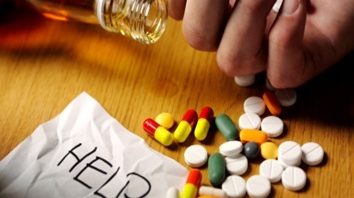According to a recent Human Rights Watch study published in 2013, federal drug offenders in the United States are given an offer they can’t refuse: fight federal drug charges in court and risk getting a sentence thrice as long if you lose, or simply accept a guilty plea deal and serve much less time. According to the Bureau of Justice Statistics, in 2010, more than half of federal prisoners incarcerated were charged with drug crimes, and the proportion has hovered around 50% ever since. While such mass incarcerations have done little or nothing to alleviate addiction, as suggested by the NIH’s report of a 2.8 fold increase in national overdose deaths between 2001 and 2014. Also troubling, The pro-reform Drug Policy Alliance has estimated that state and local spending on everything from drug-related arrests to prison add up to a total cost of at least $51 billion per year. Furthermore, the NIH also estimates that abuse of tobacco, alcohol, and illicit drugs in the US exacts more than $700 billion annually in costs related to crime, lost work productivity and health care. One cannot help but wonder, is fighting addiction fighting an illness or crime at this point?
As cited by the National Association Of Drug Court Professionals in a recent report, nearly 50% of jail and prison inmates have been diagnosed as clinically addicted to illicit drugs or alcohol, 95% of whom return to drug abuse after release from prison, and 60-80% commit further drug related crimes after their release. These facts then beg the question, are we as a society fighting this epidemic with the right tools: guns, handcuffs, and prisons, or perhaps it is time that we reexamine the fundamental basis of drug abuse and drug related criminal behavior?
The American Society Of Addiction Medicine defines addiction as, “a primary, chronic disease of brain reward, motivation, memory and related circuitry.” Furthermore, they add that, “addiction is characterized by inability to consistently abstain, impairment in behavioral control, craving, diminished recognition of significant problems with one’s behaviors and interpersonal relationships, and a dysfunctional emotional response.” In essence, drugs of abuse subdue normal reward-related behavior to uncontrollable drug-seeking and taking by altering dopaminergic neurotransmission (critical for reward) and consequently affecting glutamatergic neurotransmission (critical for reward learning). Complex signal transduction pathways are stimulated by these drugs of addiction, which then affect functional and structural neuroplasticity due to repeated drug exposure, leading to biological characteristics that typify addiction, and behavioral manifestations of the latter.
Now that I have outlined the science and statistics behind addiction, it is imperative to ask the so what question. My response is that it is about damn time that we give our fellow drug addicted Americans the medical attention that they so desperately need. To me, this move is a no brainer, it kills two birds with one stone: we solve the problem or reduce it significantly, and we save ourselves a heck of a lot of tax payer dollars, rather than squander them like the prodigal son did his fortune. To this end, I propose that we reconstruct some prisons to be drug treatment facilities where federal drug offenders are given the medical attention they deserve. Here, they would be subjected to a hospital/rehabilitation like environment that psychologically makes them feel like they are still valuable members of society and not packed away in a permanent cycle of self-destruction. These treatment centers would clinically wean them off their addictions while, as is necessary, keeping them apart from society in until they have been equipped with the skills to be able to stand on their own two feet so to speak. These treatment centers will serve as pit stops of hope and re-socialization, as well as cheaper and far more effective alternatives. What’s your take?
Addiction: An Illness or a Crime?
